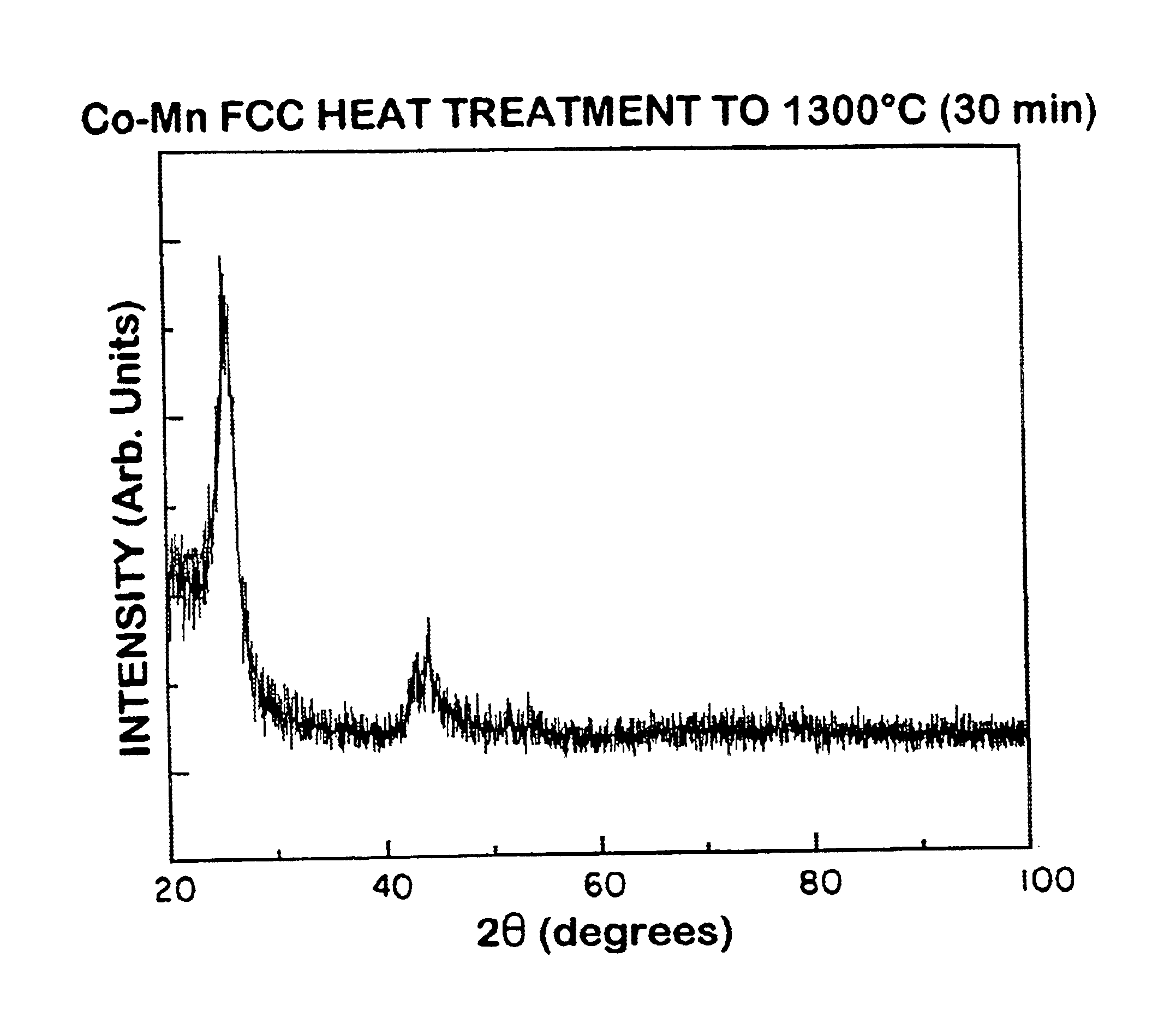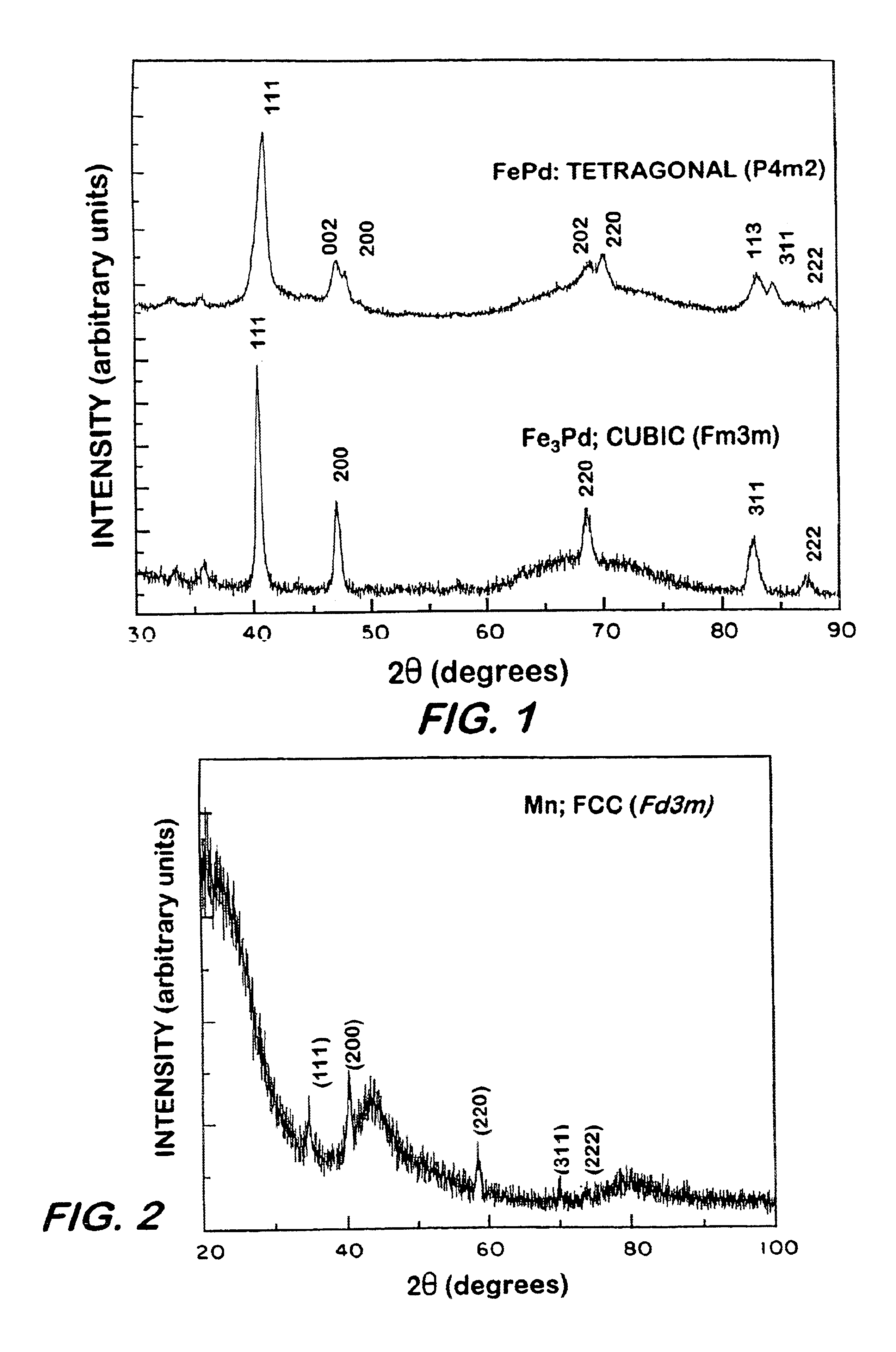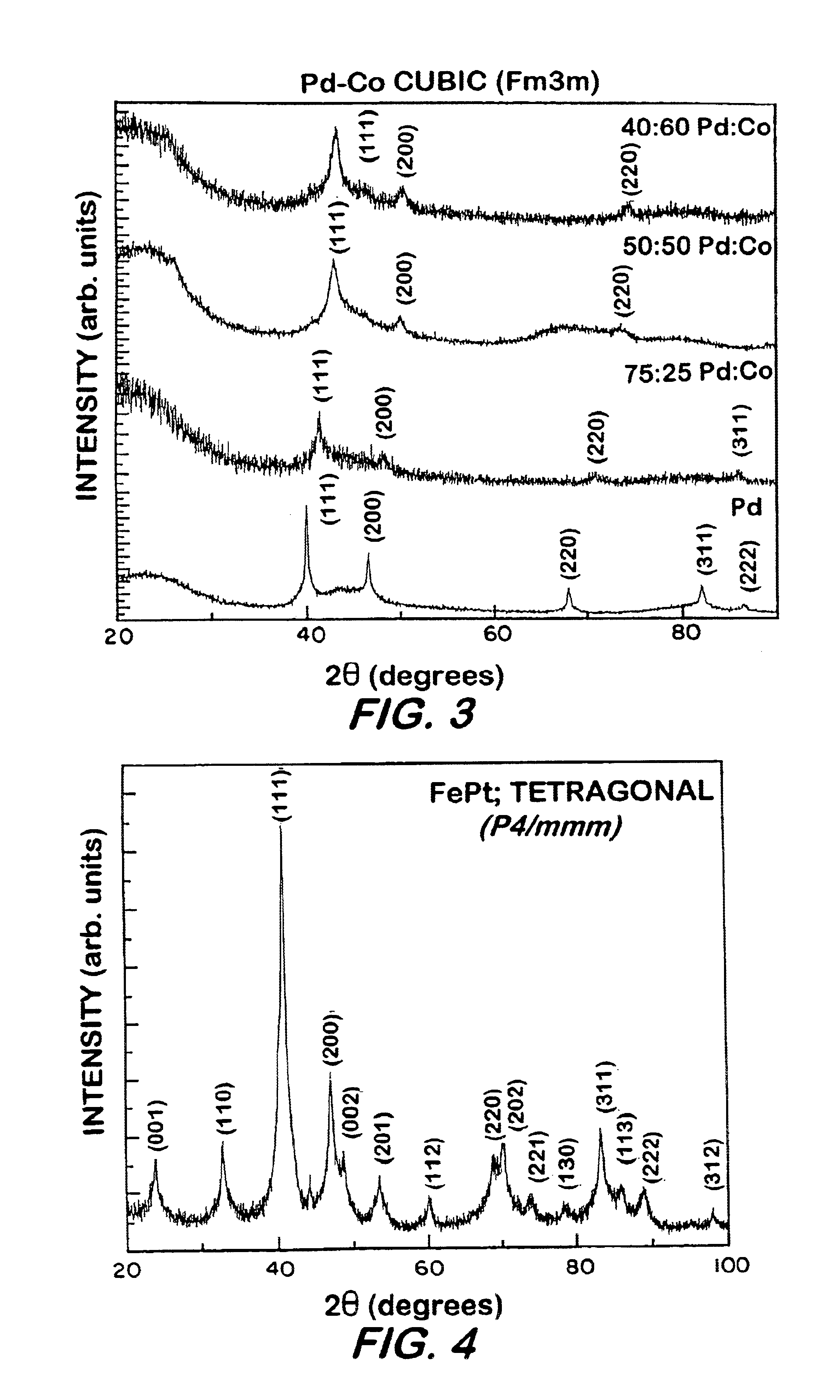Synthesis of metal nanoparticle compositions from metallic and ethynyl compounds
a technology of ethyl compounds and metal nanoparticles, which is applied in the direction of metal/metal-oxide/metal-hydroxide catalysts, magnetic bodies, natural mineral layered products, etc., can solve the problem that none of these methods can produce metal nanoparticles by heating a metallic compound
- Summary
- Abstract
- Description
- Claims
- Application Information
AI Technical Summary
Benefits of technology
Problems solved by technology
Method used
Image
Examples
examples 21-95
illustrate processes that form metal nanoparticle compositions comprising cobalt, iron, ruthenium, manganese, tungsten, cobalt-iron alloy, iron-ruthenium alloy, iron-nickel alloy, cobalt-ruthenium alloy, cobalt-palladium alloy, iron-palladium alloy, iron-platinum alloy, and cobalt-manganese alloy. Metal nanoparticles comprising other metals may also be made. Many of the metal nanoparticles compositions also comprise carbon nanotubes. The carbon nanotubes may be SWNT's or MWNT's. The diameter of the tubes may be controlled by the size of the metal nanoparticles. Larger metal nanoparticles may result in larger diameter carbon nanotubes, such as MWNT's. The metal nanoparticles can be in a polymeric, amorphous carbon, graphite, or highly ordered carbon domain depending on the heating conditions. The metal nanoparticle composition may also comprise any of crosslinked polymer, carbon nanoparticles, and elemental metal.
The metal nanoparticle composition may have magnetic properties that ar...
example 1
Synthesis of bis(ferrocenylethynyl)-bis(triphenylphosphine)nickel—Ethynylferrocene (0.3495 g, 1.66 mmol) was placed in a 250 mL round bottom flask with a side arm and cooled to −78° C. At this time, 1.6 mL of 1.6 molar n-BuLi was added with stirring for 1 hr while warming to room temperature. The solution was then cooled to −78° C. and NiCl2(PPh3)2 (0.544 g, 0.83 mmol) in 20 mL of dry THF was added by cannula. The reaction mixture was allowed to warm to room temperature and stirred overnight. Upon removal of solvent at reduced pressure, the desire black product was isolated.
example 2
Synthesis of bis(ferrocenylethynyl)-bis(triethylphosphine)palladium—Ethynylferrocene (0.3448 g, 1.64 mmol) was placed in a 250 mL round bottom flask with a side arm and cooled to −78° C. At this time, 0.74 mL of n-BuLi (0.95 equivalent) was added with stirring for 1 hr while warming to room temperature. The solution was then cooled to −78° C. and PdCl2(PEt3)2 (0.34 g, 0.82 mmol) in 20 mL of dry THF was added by cannula. The brown reaction mixture was allowed to warm to room temperature and stirred overnight. Upon removal of solvent at reduced pressure, the desire brown product was isolated.
B. Synthesis of metal-ethynyl complexes
PUM
| Property | Measurement | Unit |
|---|---|---|
| diameters | aaaaa | aaaaa |
| temperatures | aaaaa | aaaaa |
| temperature | aaaaa | aaaaa |
Abstract
Description
Claims
Application Information
 Login to View More
Login to View More - R&D
- Intellectual Property
- Life Sciences
- Materials
- Tech Scout
- Unparalleled Data Quality
- Higher Quality Content
- 60% Fewer Hallucinations
Browse by: Latest US Patents, China's latest patents, Technical Efficacy Thesaurus, Application Domain, Technology Topic, Popular Technical Reports.
© 2025 PatSnap. All rights reserved.Legal|Privacy policy|Modern Slavery Act Transparency Statement|Sitemap|About US| Contact US: help@patsnap.com



